Dear Reader,
My recent acquisition of yet more second-hand books had prompted me to take a closer look at two I already owned, as well as a self-professed ‘Explosive Bestseller’ which I picked up in paperback last week.
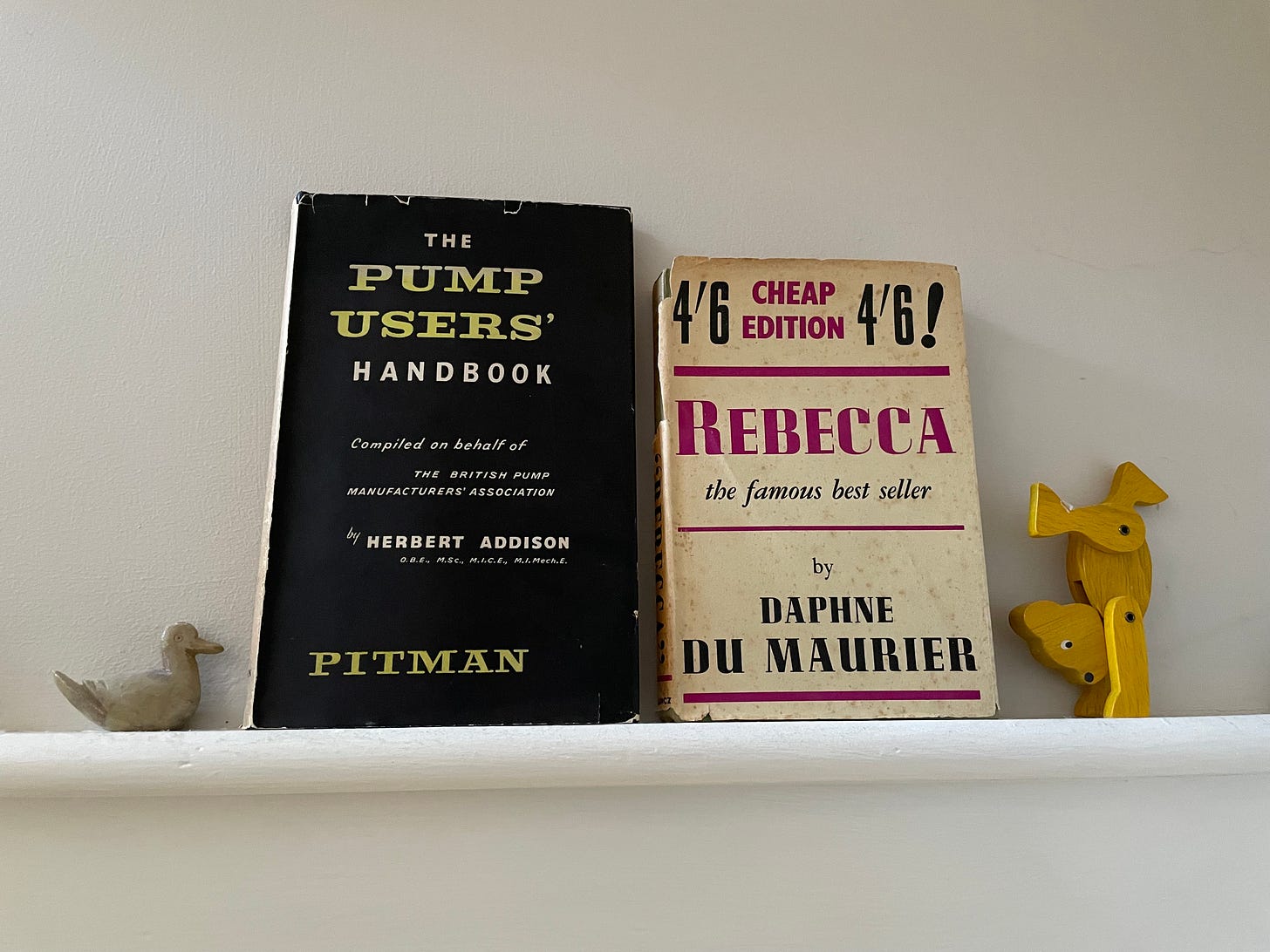
VOLUME 1
The Pump Users’ Handbook by Herbert Addison
After several years of lobbying the diabetes centre at my local hospital I was thrilled when the powers that be at last relented and granted my request for an insulin pump. Bye bye clunky insulin pens, hello treating my condition with more streamlined contemporary technology.
I’d taken a little time off work to get to grips with this new way of managing my type 1 diabetes, and on my first confidence-building trip out of the house after being connected to my new hardware I found myself in a secondhand bookshop.
This volume caught my eye:
Convinced that the universe had conspired to plant it just for me I picked it up.
‘I’m a pump user!’ I beamed. ‘It’s literally got my name on it!’
The bookseller raised her eyebrows. ‘Really?’ she asked, in that kind of voice.
Realising that mine was rather a niche kind of excitement, I felt too foolish to explain. Instead, I quietly parted with £4 and headed home with my prize.
The cover price of The Pump Users’ Handbook at the time of its publication in 1958 was a whopping 30 shillings.1 This website calculates the equivalent price in 2021 (later dates being unavailable) to be £37.28. I wondered how much it would cost to buy the book today, and turned to Google.
With the book by now almost certainly out of print it was no surprise that my search for it elicited no results, but my browse of the online shelves of Waterstones for a more contemporary book on pumps turned this one up, published in 1998:
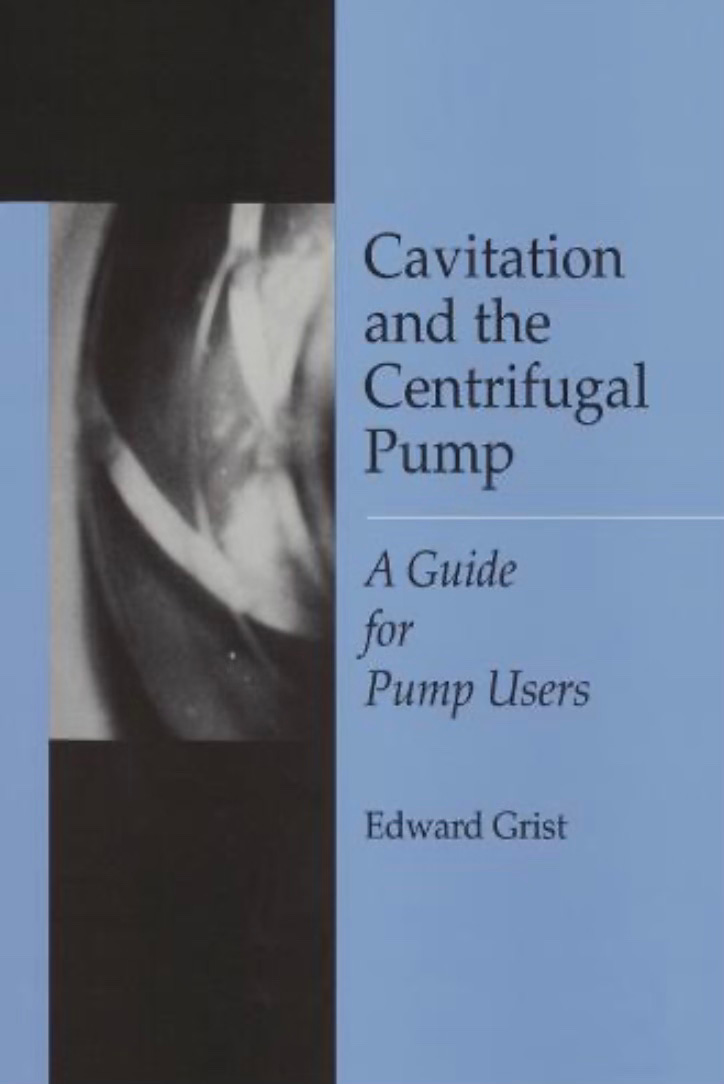
I discovered that a purchase of Cavitation and the Centrifugal Pump: A Guide for Pump Users by Edward Grist would set me back £160.
This practical reference describes the occurrence of cavitation in a centrifugal pump, and how unacceptable cavitation can be avoided. It explains cavitation problems such as hydraulic performance loss, hydrodynamically or thermodynamically induced surging, and cavitation erosion.
Would it be worth the spend? Sure, if I wanted to learn more about cavitation.
💬 Well, what is cavitation?
Reader, I’m so glad you asked! I can help you out there, because I have a book about pumps. 😉
If you don’t want to read what Chapter 8 of my £4 second-hand purchase has to say on cavitation, please skip the three-paragraph block quote below.
😁
The word itself is derived from the word cavity – an empty space or hollow. The “empty” spaces to be found in a liquid when cavitation occurs are bubbles of vapour. They will be formed of water vapour if the liquid is water, petrol vapour if the liquid is petrol, and so on; and they are of the same nature as the bubbles observed when the liquid boils. But boiling can be induced without heating the liquid: instead, we could reduce the absolute pressure on it. If the pressure were brought down low enough, that is, to the vapour pressure of the liquid, vapour bubbles might form even though the liquid remained at atmospheric temperature. Nor is it essential that this pressure reduction should be brought about by a vacuum pump or similar contrivance. If the liquid were in motion, very low absolute pressures might be induced by modifying the shape of the enclosing walls and thereby creating local changes of velocity.
Suppose, then, that in such a passage – fixed or moving – there should be an area where the local pressure has been reduced to the liquid vapour pressure. Bubbles of vapour will inevitably form there. But the flow of the liquid will swiftly carry them away to regions of higher pressure. Almost instantly the bubbles will collapse, for they cannot exist if the surrounding pressure is in the slightest degree higher than the vapour pressure. Moreover, they collapse with extreme rapidity. If the bubbles happen to be in contact with the metallic walls of the passage, the liquid rushing in to fill the vacuous spaces generates a kind of water-hammer effect. This means that on very small areas of the metal, extremely high pressures are momentarily developed; and although each individual hammer blow may be minute, yet if the blows are repeated often enough and for a sufficiently long period, the solid metal may be damaged or even destroyed.
It is not the cavities themselves that are necessarily destructive, then, but the residual effects after the cavities have disappeared.
Taken from The Pump Users’ Handbook by Herbert Addison, pages 70-71.
Welcome back!
🤣
My research on cavitation complete, I closed the book. Laying it on my desk I noticed something I hadn’t spotted before: that the spine text is printed in the wrong direction.
Reader, upside-down spine text really bothers me! If you’d like to know how much, have a read of this post:
It turns out that Herbert Addison OBE2, MSc3, MICE4, MIMechE5 has not only multiple letters after his name, but more than one book title, too. In fact, if you’re interested in owning a copy of his 1956 tome A Treatise on Applied Hydraulics you can pick it up for £8 on eBay right now.
VOLUME 2
Rebecca by Daphne du Maurier
On the lookout for an original gift for my husband to mark our third wedding anniversary I was delighted to spot exactly the right thing in a vintage shop in Chichester. Reader, how could I resist? 🤣
At only 4’6 (four shillings and sixpence) this 1948 hardback was certainly worthy of its ‘cheap edition’ claim, and indeed its exclamation mark. When I opened the cover to find the price the shop had marked it with – just £2 – I found this gorgeous inscription:
To my Darling Wife,
because she likes this story.
With all my love,
Frank
Singapore
November, 1948
Frank had written these tender words in fountain pen, and had smudged the full stop he’d added after the date. I wonder if he – or his nameless wife – had minded?6
With Singapore having been a British colony for over 140 years until 1963, in 1948 Frank would have paid the cover price of 4’6 in shillings and pence rather than Singapore dollars, which didn’t become the local currency until 1967. The price he paid equates to £8.70 in 2021, and today the cheapest hardback edition offered on the Waterstones website is £14.99.
The book had been printed in Bungay, Suffolk, England, but thanks to the rubber-stamped text in purple ink on an early page I can see that Frank had bought it at a bookshop more local to him.
I had a look on Google Street View for 17 High Street, Singapore, hoping to see the frontage of Ensign Book Store.
Reader, not only is the bookshop not there, number 17 is also missing. In fact, Google Street View showed me that the lowest-numbered address in High Street, Singapore, is 67. How could this be?
The National Library Board of Singapore helped me out:
High Street, located in the Downtown Core of the Central Region, stretches from Hill Street to North Bridge Road. Cleared from part of the jungle near the shore in 1819, it was the first street laid out in Singapore. The short street is appropriately named as it sits on high ground and thus not prone to flooding, as other areas frequently were. From the turn of the century until the 1970s, High Street was a popular shopping haven of the elite. The original street was much longer and used to run from Hill Street all the way to St Andrew’s Road. In 1999, the stretch of the street between North Bridge Road and St Andrew’s Road was renamed Parliament Place.
An online search for ‘Ensign Book Store Singapore’ told me that from 1974 until the business closed down (on a date not given) it had been located at these premises at 109 North Bridge Road, just moments away from its previous location in High Street:

I’m not sure that Frank would even recognise this place today. I like to think that his gift to his wife of Rebecca – nearly 70 years before I gave the same book to Jim – had been to mark their own anniversary.
♥️
VOLUME 3
Peyton Place by Grace Metalious
This copy of Peyton Place – a book first published in 1957 – is the only paperback in the collection of volumes I’m exploring in this post. It was this sensationalist headline in orange and yellow on the front cover which had made it irresistible to me:
I find it interesting that although two of its words have been given initial capitals for emphasis, the otherwise shouty caption is written entirely in lower case.
And look!
The enthusiastic marketing pitch continues on the back cover!
Reader, exclamation marks abound!
Previous owner Gwyneth Pritchard – for it is her name inscribed in biro on the first page – had also been unable to resist this book. Had she already seen ‘the famous film’ mentioned in such bright colours on the front cover?7
Published by Pan Books and printed in London in 1960, this is the English edition of Peyton Place. This is immediately obvious from these clues on the cover:
The printed price on the front cover is in shillings, not dollars.
The exclamation-marked back-cover headline is missing the Oxford comma seen in US English:
Frank, revealing and shockingly honest! 🇬🇧
Frank, revealing, and shockingly honest! 🇺🇸The back-cover blurb ‘A big, powerful, human book’ is from English newspaper The Daily Telegraph.
Of the three books I’ve examined for this post this one had the cheapest cover price, presumably because of its paperback binding. 3’6 (three shillings and sixpence) equates to £4.49 today. If I wanted a contemporary paperback edition of Peyton Place – no offence, Grace, but I don’t – I could purchase one from Waterstones for £10.99.
Although I have read Rebecca I have only ever dipped in and out of The Pump Users’ Handbook. But I wonder if I’ll get further into Peyton Place than Gwyneth Pritchard, clearly a stranger to the paper bookmark, had managed? You see, the turned-down corner of page 49 tells me that that’s as far as she’d got.
Reader, I’m going to finish what Gwyneth had started, and tackle this ‘Explosive Bestseller’ for myself. I’ll let you know how I get on!
Love,
Rebecca
📚 Reading 📚
📚 Take a moment to spend with this delightful post by
and some chickadees on ice. Her words and photographs are absolutely stunning.📚 My favourite post from the start of 2024 is this one from
in which looks at the view through the new year window:📚 Regular readers of ‘Dear Reader, I’m Lost' will be no strangers to my ongoing light-hearted letter-writing project with fellow Brit
of Eclecticism: Reflections on literature and life. It’s his turn to write to me on Wednesday! You can find the archive of our chortlesome correspondence here.If you’ve enjoyed this post, please let me know by clicking the heart. Thank you!
Thank you for reading! If you enjoy ‘Dear Reader, I’m lost’, please share and subscribe for free.
Before decimalisation of the currency in February 1971, the British pound sterling was subdivided into 20 shillings, with each shilling made up of 12 (old) pence, a total of 240 pence. With decimalisation, the pound kept its old value and name, but the shilling was abolished, and the penny was revalued, such that the pound was subdivided into 100 of what were originally called "new pence", and later just pence ("p") when confusion was no longer likely.
OBE: Order of the British Empire.
MSc: Master of Science.
MICE: Member of the Institution of Civil Engineers.
MIMechE: Member of the Institution of Mechanical Engineers.
For the record, I would have minded. Reader, I’m like that… 🙄
Peyton Place is a 1957 American drama film starring Lana Turner, Hope Lange, Lee Philips, Lloyd Nolan, Diane Varsi, Arthur Kennedy, Russ Tamblyn, and Terry Moore. Directed by Mark Robson, it follows the residents of a small fictional New England mill town in the years surrounding World War II, where scandal, homicide, suicide, incest, and moral hypocrisy belie its tranquil façade. It is based on Grace Metalious’s bestselling 1956 novel of the same name.
Released in December 1957, Peyton Place was a major box-office success, though its omission of the novel’s sexually explicit material was widely criticized. The film was nominated for nine Academy Awards, including Best Picture. It won none, tying the record set by The Little Foxes for most nominations with no wins.
Taken from Wikipedia.







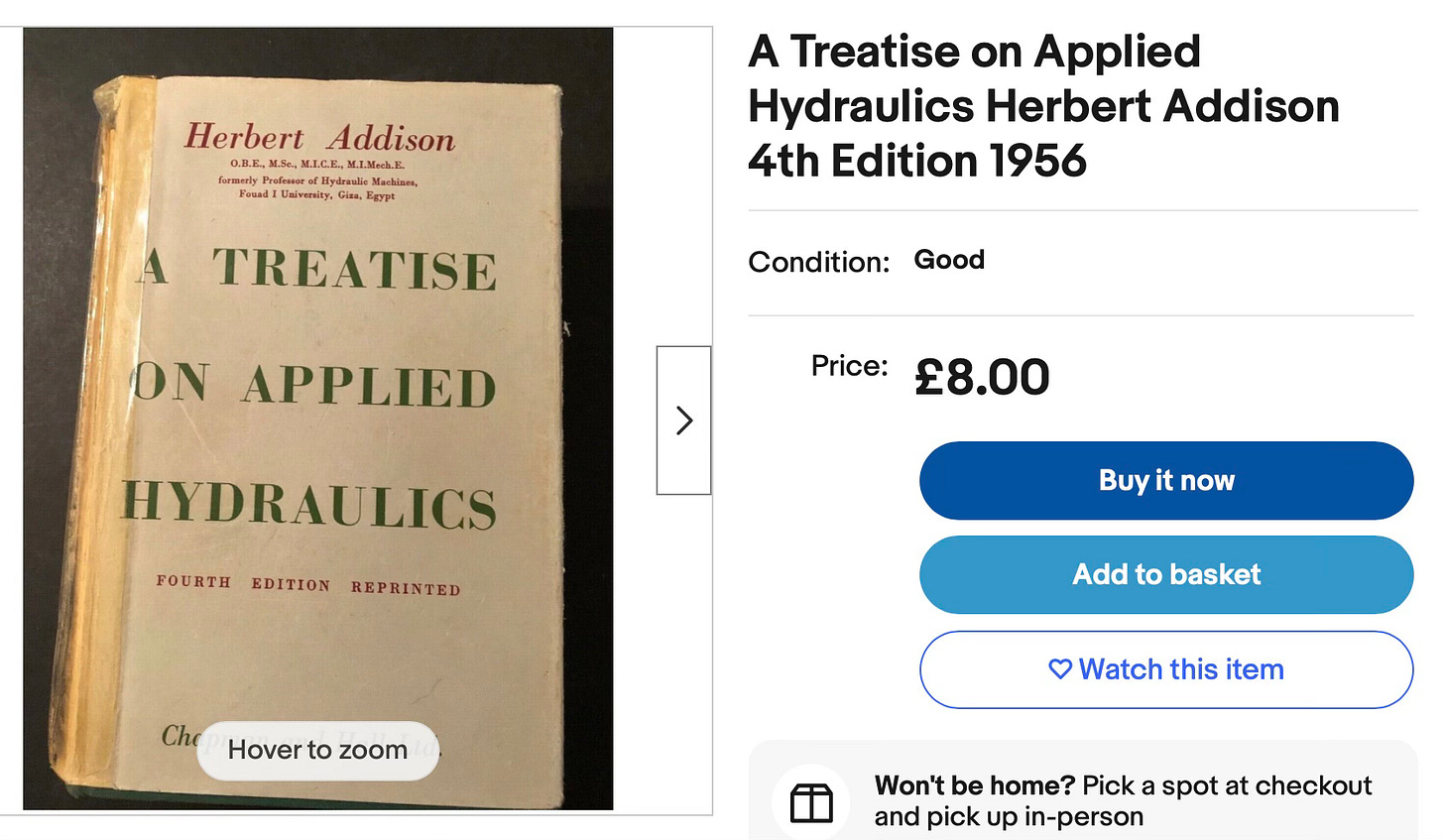


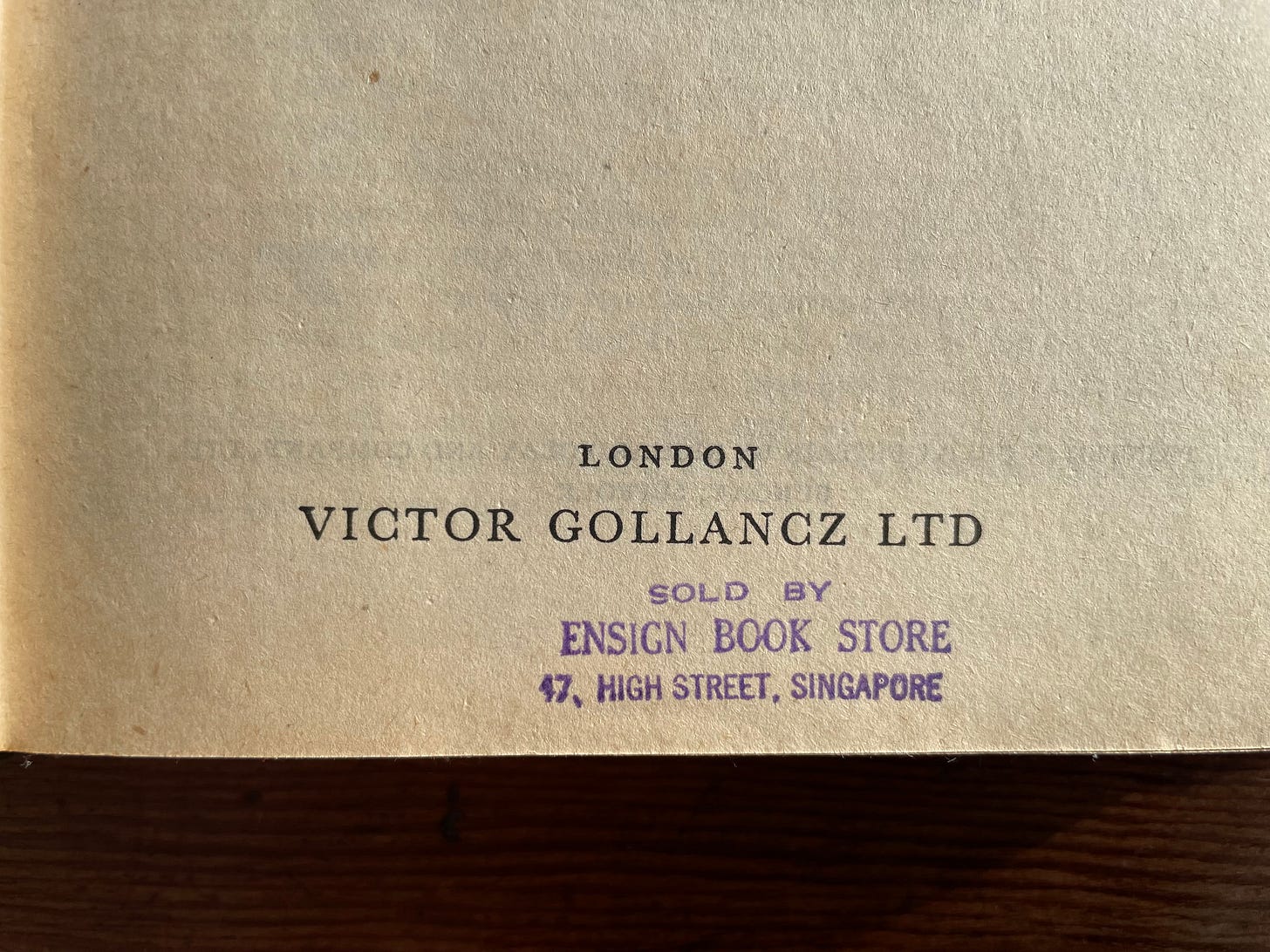



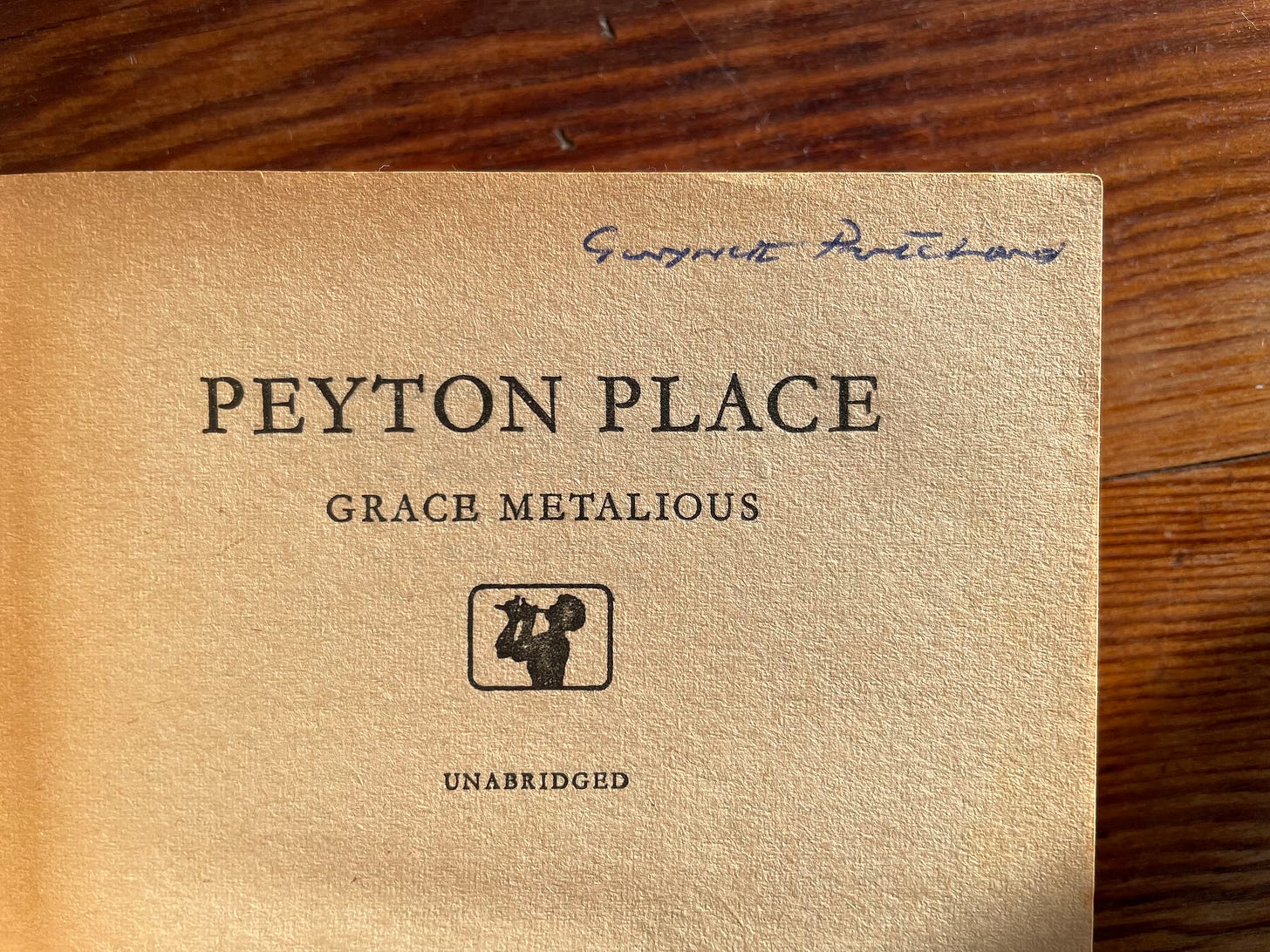
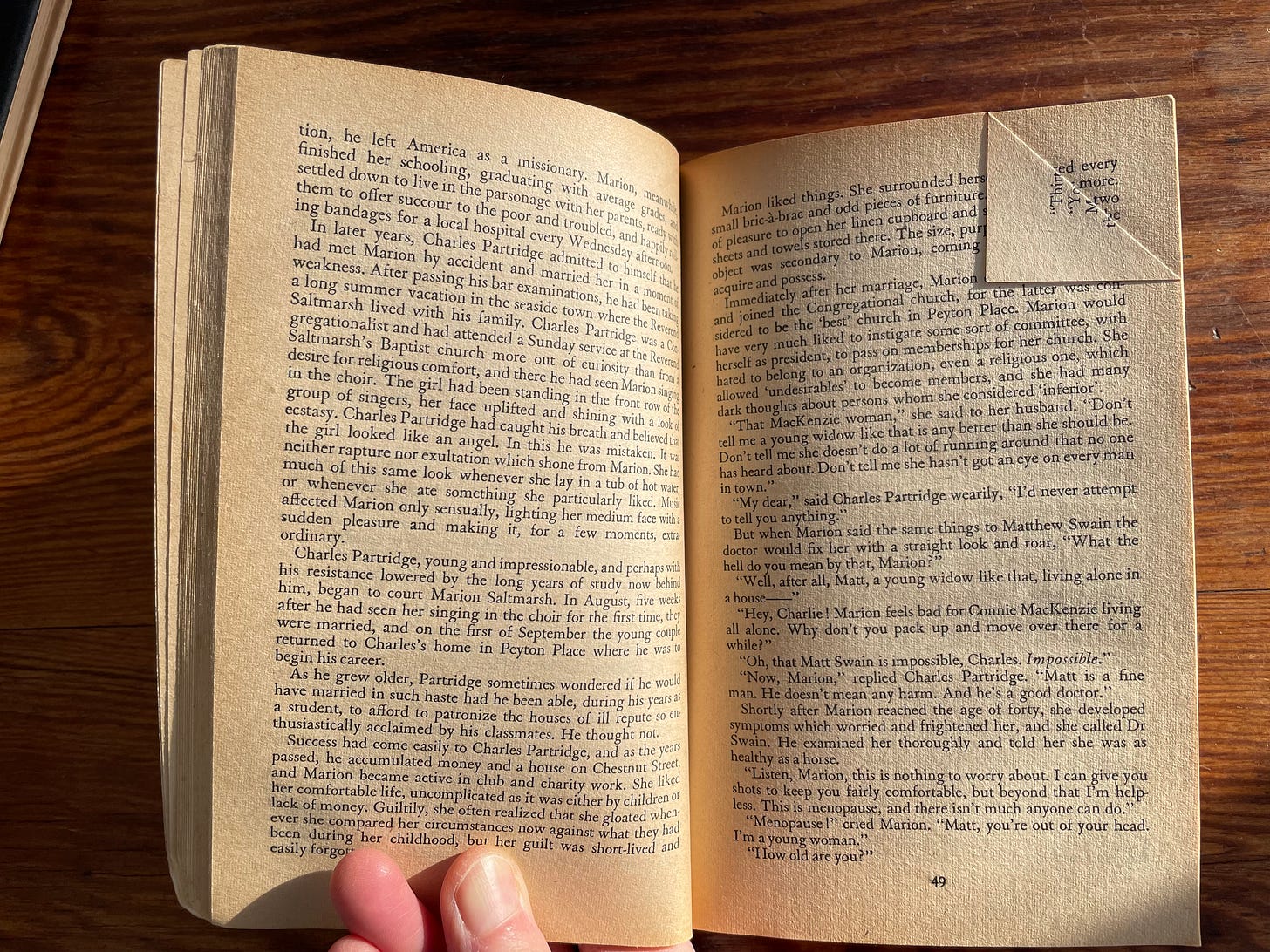



“The book had been printed in Bungay, Suffolk, England, but thanks to the rubber-stamped text in purple ink on an early page I can see that Frank had bought it at a bookshop more local to him.”
Lovely little detail!
I’ve been known to haunt a few used bookstores and when a copy has a stamp or two it just hits different. I think of it like a passport, and in your case it virtually is.
My favorite stamp was a reader’s stamp. It said, ‘to those who read this, I’m dead.’ I suppose a little grim, but as someone who will only reluctantly allow my books to be sold once I die I identified strongly with the sentiment.
I had to stop reading this post to tell you about a 3’6 edition of Rebecca which belonged to my mother (as a child I thought the numbers stood for 3ft 6inches, a very short person!)
In 1942 my father was in the Royal Naval Volunteer Reserve and when he had shore leave my mother travelled to Portsmouth to visit him. As she boarded her train for the return journey he handed her a hardback copy of the said book. She was working as a landgirl, living in a Romany caravan on a farm at the time so he had inscribed it to “my darling gypsy”. Nine months later my brother was born!
Unfortunately I don’t have the book.
Back to the rest of your post while I drink my coffee.